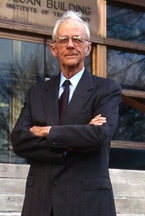Planning and Managing Distance Education Systems: System Methodology
Farhad Saba, Ph. D.
Founder and Editor, Distance-Educator.com
In this series of articles, I presented a hierarchical model of distance education consisting of seven interrelated nested systems levels. These systems have been present in most distance education organizations that I observed, or planned and built over the past 30 years. In the previous weeks, I discussed Hardware, Software, Telecommunications, Instructional, Educational, Societal and Global Systems Levels. Last week I started to explain the process of system modeling so that you could start the planning process for your organization. I hope that conducting the environmental scan as presented in a previous article has given you a better appreciation of the components of the technology-based educational programs in your organization and the interrelationships among such components. But before we go any further on the process of modeling itself, certain important concepts in system methodology must be explained in the following.
System methodology
Systems methodology is a means of analyzing parts of a whole and understanding the relationships among them in formal mathematical language. This process of analysis and synthesis is based on a set of principles that have emerged over the years in the research literature of systems theory and analysis. The characteristics of systems, outlined in the side bar, are a summary distilled from some of the significant contributors to the field of systems analysis and organization development. (Akoff, 1979; Anderson & Johnson, 1997; Banathy, 1992; Bertalanffy, 1988; Capra, 1982, 1996; Churchman, 1979; Dubin, 1978; Lazlo, 1996; Prigogine, 1997; Roberts et al., 1983; Senge, 1990; Skyttner, 2001).
In simpler times, it probably would have been easy to keep the behaviors as well as actual and potential influences of some if not all of the components that are active in a system in mind and make appropriate decisions regarding how to reach future objectives for an organization.
In understanding systems a good example is the human body. Different organs of the body work together, but they cannot function in isolation. What the body does as a whole is always greater than the sum of its parts. In other words, humans are capable of sustaining life and thinking in abstract, which has enabled them to develop schools of philosophy, create literature, devise technologies, and change their environment in so many different ways.
Components of a system can be:
- People- e.g., instructors, learners, administrators, policy makers, politicians and employers;
- Objects- e.g., computers and telecommunication lines that make communication among the people possible, and
- Intangibles- e.g., laws, rules, policies and procedures, and decisions that govern how people and objects function in society, in an organization or in a family. Decisions are of particular importance here, as they constitute one of the major building blocks of modeling in this book.
A system can be composed of any number of these components that work together to make up a school, a university, an extended studies division, an academic department in a college, a distance education program or a state university system as a whole. In the planning process planners and modelers in institutions of higher education might consider these types of organizational units to define the boundary of a system and decide which components should be included in a model. All necessary components must be included in a model for a system to reach its goal but it should not include any unnecessary components as they may impact the integrity of model and complicate the modeling process unnecessarily.
In simpler times, it probably would have been easy to keep the behaviors as well as actual and potential influences of some if not all of the components that are active in a system in mind and make appropriate decisions regarding how to reach future objectives for an organization. Processes were also slower and decision makers had more time to look at data, make calculations and adjust to new conditions and save a firm from plunging into crisis or even certain death. That is no longer true. We live in more complex times than ever before, and it seems that the speed of life has accelerated with no sign of slowing soon.
Forrester, the founder of system dynamics, a method of planning and organizational development used in this book observed “Our social systems are highly nonlinear and most of the time are operating against limitations of overemployment, politically unacceptable unemployment, money shortages, pressures to overcome inflation or recession, or inadequacy of capital equipment.” (Forrester 1961 Page 66). The combination of these factors often defy intuitive judgment for making good decisions and lead to courses of action that are detrimental to the overall well being of organizations as well as serving the interests of the primary stakeholders who should benefit from the results of such decisions.
As Sterman (2002) pointed out: “As wonderful as the human mind is, the complexity of the world dwarfs our understanding. Our mental models are limited, internally inconsistent, and unreliable. Our ability to understand the unfolding impacts of our decisions is poor. We take actions that make sense from our short-term and parochial perspectives, but these decisions often feed back to hurt us in the long run.” (pp. 5).
System modeling provides an important method to explicate decisions needed by various stakeholders in an organization and model the impact of each decision on all the others in a coherent view over a period of time. Decisions that look benign or even useful at the outset may become detrimental to the achieving the goals of the system as time progresses. It is better to detect the unintended consequences of decision in a model on a computer as compared to in the real referent of the model and prevent undesirable results for stakeholders.
System dynamics: A Short introduction

Jay Forrester, Professor Emeritus of Management in System Dynamics at the MIT Sloan School of Management
J. W. Forrester, professor emeritus at MIT’s Sloan School of Management, founded the concept of system dynamics for improving decision making in enterprises. He posited that system dynamics is based on the role that information feedback loops play in organizations and the importance of the art and science of management to understanding such information-feedback loops. Forrester saw the increasing ability of digital computers to provide for an experimental approach to systems design in which systems can be modeled and run on computers based on the consequences of different decisions to see how such decisions impact the entire system as a whole in reaching the overall objective of an institution. In his seminal book titled Industrial Dynamics (1961) he posited four foundations for system dynamics. These were adapted and updated in the following to reflect today’s realities, especially in the area of computing power which has made dramatic improvements since the 1960s:
1- Information-feedback loops are present in organizations when influences from their environment prompts their leaders to make certain decisions, which in turn affect the environment and thereby lead to future decisions.
2- How decisions are made have a great impact on the success or failure of organizations. Often the intuitive judgment based on which decisions are made lead to unintended or undesirable consequences. Therefore, study of management principles and practices are of crucial importance in system dynamics.
3- Systems dynamics is an experimental (iterative) method in understanding the behavior of organizations. A mathematical model is inadequate to offer solutions for real systems that are often very complex in nature. Therefore, a simulation process is adopted in which
- first a mathematical model that describes how conditions at a specific point in time leads to subsequent conditions at a later pint in time is constructed.
- the behavior of the model is observed on a computer.
- data is collected from the real life referent of the model and
- the behavior of the model is observed again in subsequent iterations based on new data and/or assumptions made for the original conditions of the model.
4- Digital computer technology has made such experimental approach readily available as it can be used to process huge amount of data in ever more complex models on a laptop machine; an affordance that was not within reach even 20 years ago.
System modeling provides an important method to explicate decisions needed by various stakeholders in an organization and model the impact of each decision on all the others in a coherent view over a period of time.
Since the 1960s, Forrester as well as his students, colleagues and others who have specialized in system dynamics throughout the world have used this method to model the behavior of a wide range of systems from industrial units to ecological environments and social organizations, such as educational institutions, and even the world as a whole. System dynamics has helped many decision makers in different types of organizations learn how their unit is performing now and how it might perform under certain circumstances and underlying assumptions as well as decisions in the future. Such circumstances, assumptions and decisions not only take into consideration quantitative data collected about the operation of an institution, but also the qualitative judgment of the decision makers, stakeholders, and others who may be directly, or indirectly involved in the life an organization. Planners and decision makers can simulate a model reflecting both of these kinds of data on a computer and the results could be examined in the non-threatening environment of a computer model in which the future of an institution and the academic needs of students, and faculty, as well as other stakeholders, such as administrators are not jeopardized. Appropriate decisions can be made to mitigate potential problems now and in the future in the real referent system as the simulation results become apparent.
As early as 1976 Roberts and Chew developed a computer simulation model using system dynamics for long range planning of graduate education in the University of Amherst, Massachusetts. At the time they developed the model in FORTRAN language. In this model they incorporated national, state, and internal institutional forces that were influencing graduate education in the University of Amherst. The model was designed to show the causal relationships between three major interdependent academic program elements within a large public university:
- undergraduate education,
- graduate education, and
- research.
The model’s emphasis was on the institutional resources (students, staff, and budgets) that were present in academic programs. Parameters were selected to allow the model to be applied either to an academic department or to the entire university’s combined academic programs.








